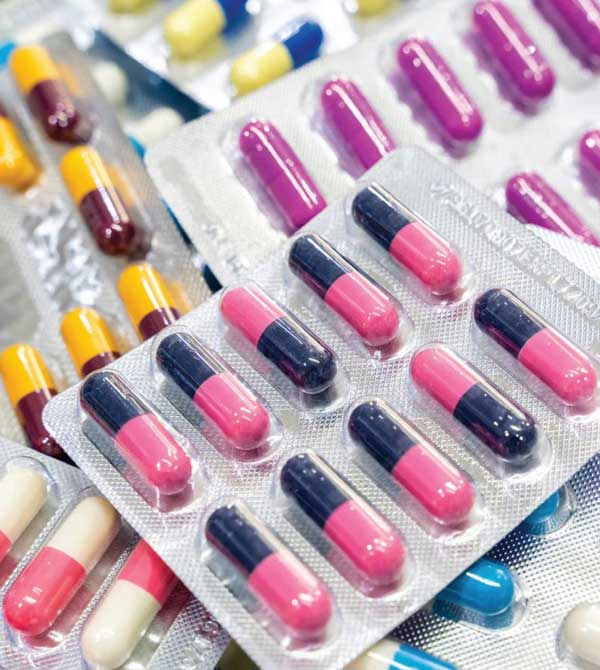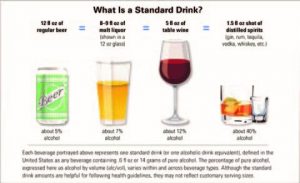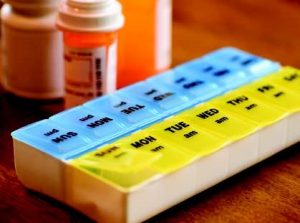by Ivan | Mar 1, 2020 | Nutrition, Patient News

Examining Plant Based Burgers as Meat Alternatives
They’re 2019’s most sizzling success story, found everywhere from grocery freezer to fast food counter. Impossible Foods and Beyond Meat have brought plant based burgers from fringe to mainstream with remarkable rapidity. So quickly, in fact, that despite their ubiquity, questions abound regarding the burgers’ benefits. What exactly are they made of? Are they flavorful? How do they compare nutritionally with a turkey patty or an all-beef quarter pounder? Are they meant for a healthy planet and a healthy body?
Both feature a lengthy list of ingredients that may seem far from natural, but both plant based burgers were formulated to recreate the meaty, juicy mouthfeel of a hamburger. That being said, hundreds of meat alternative taste tests and rave reviews have demonstrated that expectations have indeed, been exceeded.
Ironically, many vegans haven’t embraced these plant-based burgers precisely because their taste, smell and texture evokes a beefy authenticity they’ve long eschewed.
What Goes Into Plant Based Burgers?
Impossible Burger is made primarily of soy protein concentrate, coconut and sunflower oil, binders, vitamins, minerals and the key ingredient – soy leghemoglobin, or “heme” – which makes the burger “bleed” and brown like meat. Beyond Burger, recently reconfigured to promise an even meatier flavor and chew, features an elaborate combination of plant proteins including pea and mung bean; fats for cooking sizzle, such as coconut oil and cocoa butter; minerals like calcium and iron; potato starch to bind; and beet juice extract for a beef-like red color in their plant based burgers.
Just the (nutritional) Facts!
Nutritional info for plant based burgers, paints a somewhat mixed picture. The good news is, the burgers contain approximately 20 grams of protein (equivalent to ground beef); a healthy mix of vitamins and minerals, including B vitamin, zinc and iron; and no cholesterol.
Interestingly, the plant based burgers may not be the best choice for people following a heart-healthy diet, as they are higher in saturated fat than turkey burgers and contain substantially more sodium than lean beef burgers. Moreover, you might consider creating your own vegetarian burger with beans, whole grains, herbs, seeds and nuts as a healthier option.
“These burgers offer good amounts of antioxidants and certain vitamins and minerals, but they aren’t quite the same as a whole-foods veggie burger made from beans,” explains Registered Dietitian Ginger Hultin, spokesperson for the Academy of Nutrition and Dietetics. “In order to mimic meat well, they use a blend of ingredients that includes saturated fat, similar to a beef burger, but from coconut oil.”
So, what’s the verdict?
“They’re interesting, delicious products that can fit into a balanced diet, and have benefits in the form of supporting the environment and saving the lives of animals,” she says.
| 4 oz. portion |
Impossible Burger |
Beyond Burger |
85% lean burger |
90% lean burger |
Turkey burger |
| Total Fat |
14g |
18 g |
15 g |
10 g |
10 g |
| Sat. Fat |
8 g |
6 g |
6 g |
4 g |
3 g |
| Cholesterol |
0 mg |
o mg |
88 mg |
65 mg |
92 mg |
| Sodium |
370 mg |
390 mg |
72 mg |
66 mg |
400 mg |
To sum up, supporting the environment and saving the lives of Animals is, in fact, the real fuel driving these companies, both of which are on a mission to reduce meat consumption and ensure a sustainable global food supply by giving people what they enjoy most – big, juicy (plant based) burgers.
The post Are Plant Based Burgers Really Healthier? appeared first on Specialdocs Consultants.
by Specialdocs Consultants, LLC | Feb 1, 2020 | Medical Conditions, Patient News

Oh, My Aching Head
A dull pressure, a sharp pain, an uncomfortable pounding, a vise-like sensation – all can signal the start of a headache. A painful part of the human condition since the beginning of time, more than 150 different types of headaches have been identified, categorized and treated in increasingly effective ways. We take a look at how to cope with the most common headaches, as well as when your symptoms indicate immediate attention is needed in this great reference guide to headache types and remedies.
 Tension Headache
Tension Headache
It’s the rare person who hasn’t experienced the tight feeling or band-like grip around the head that characterizes a tension headache. Stress is frequently the trigger, so staving them off with recognized stress management strategies such as deep breathing exercises, yoga, meditation, and progressive muscle relaxation may help. For immediate relief, gentle massage and use of warmth or heat to ease tense neck and shoulder muscles often work well. Over-the-counter medicine such as aspirin, ibuprofen or acetaminophen may also be used judiciously.
Cluster Headache
Seen more often in men, these headaches cause intense pain on one side of the head or around one eye; are often accompanied by nasal discharge or teary eyes; and occur in bouts of frequent attacks over weeks or months, followed by long periods of remission. Treatments include inhaling pure oxygen through a face mask, which often relieves pain within 15 minutes, and injectable triptan medications used to treat migraines.
Exertional Headache
Headaches experienced after strenuous exercise may result from being dehydrated or overheated or simply from overexertion, and are usually resolved quickly with rest and adequate hydration.
Sinus Headache
The pain, pressure and fullness in cheeks, brow or forehead, often accompanied by stuffy nose, fatigue and an upper toothache, can indicate a headache from sinusitis or seasonal allergies, but be aware that in many cases it is actually a migraine. Rest, fluids, decongestants and over-the-counter pain medications help alleviate headaches caused by sinusitis; those caused by an allergy will usually be treated with a nasal spray.
Each headache has its own “flavor,” but if they occur more frequently or more severely, seem to worsen with the use of over-the-counter drugs, and interfere with your normal activities, please contact us…and consider starting a headache journal that you can bring to your appointment. Track if they are occurring at certain times of day, or after specific activities or foods; e.g., after a workout, a sleepless night or a change in diet. Also note the duration of each headache; where the pain is located; the intensity and type of pain; other accompanying symptoms, such as gastrointestinal distress; and medications you used. Pre-formatted trackers can be accessed online at sites such as headaches.org.
When to seek help promptly: If your headache can be described as one of the worst you’ve ever experienced and is accompanied by trouble seeing, speaking or walking; fainting; high fever; numbness, weakness or paralysis on one side of your body; stiff neck; or nausea or vomiting.
Inside the ‘Migraine Brain’
Despite the prevalence of migraine headaches, which affect 39 million people in the U.S. alone, their complex and multifactorial causes have made it difficult to pinpoint the most effective management of often debilitating symptoms that can include severe, pulsating pain; nausea; and visual auras. But years of research into the “migraine brain” are revealing a deeper understanding and new treatments, discussed in our Q&A with a headache expert, below.
Q: What is a migraine brain?
A: We have found it’s wired somewhat differently than the average brain, highly sensitive to light, sound and movement.
Q: Does genetics play a role?
A: Absolutely, as more than 70% of migraine sufferers have at least one close relative with the problem.
Q: What triggers a migraine?
A: Among the multiple factors are stress, hormonal shifts, time and travel changes, certain foods, inadequate nutrition, alcohol, and too much or too little caffeine. Anyone of these, or more likely, a combination, can trigger an episode. But the number one cause is the overuse of migraine medications, which triggers rebound headaches and starts a cycle of needing increasing quantities for relief.
Q: What medications are used to manage or prevent symptoms?
A: In addition to over-the-counter medications such as acetaminophen, a class of drugs called triptans that block pain signals in the brain have been used effectively for years. There are many other options, such as new biologic drugs to prevent or minimize the pain of migraines, including calcitonin gene-related peptide (CGRP) inhibitors and serotonin-receptor agonists.
Q: Will lifestyle adjustments make a difference?
A: There is no question that migraine patients benefit most from a set routine of healthy eating (avoiding alcohol and foods with nitrites or preservatives) and regular exercise; getting adequate sleep each night; and learning to manage stress with techniques such as biofeedback training, relaxation training and cognitive-behavioral therapy.
The post Headaches – Types and Remedies appeared first on Specialdocs Consultants.
by Ivan | Jan 16, 2020 | Medications, Patient News

Antibiotics Awareness
Spurred by Alexander Fleming’s serendipitous discovery of penicillin in 1928, antibiotics have rightfully become wonder drugs, often able to change the course of deadly bacterial infections in a matter of days. But in recent years, their unmatched healing power has become overprescribed and over utilized, leading to concerning findings like these: Nearly 23% of antibiotic prescriptions filled in 2016 were unnecessary, and an additional 36% were prescribed for conditions for which an antibiotic is only sometimes recommended, according to a recent study from the Agency for Healthcare Research and Quality. Antibiotics awareness is good for your health
Unintended consequences far from benign
Patients may needlessly experience the drug’s side effects, such as rash, dizziness, nausea, diarrhea or Clostridium difficile infection (C. diff), which can cause severe diarrhea and may be life-threatening. On a larger, global scale, overuse leads to antibiotic-resistant bacteria, a growing danger that occurs when bacteria that have been exposed to an antibiotic mutate, rendering the drug ineffective against them. The Centers for Disease Control estimates that at least 2 million people are infected with antibiotic-resistant bacteria each year in the US, resulting in approximately 23,000 deaths. In fact, Fleming himself predicted the possibility in his 1945 Nobel Prize acceptance speech, saying: “It is not difficult to make microbes resistant to penicillin in the laboratory by exposing them to concentrations not sufficient to kill them, and the same thing has occasionally happened in the body.”
Antibiotics: Handle With Care
That’s why the World Health Organization’s annual “Antibiotics: Handle With Care” campaign, launched in 2015, and the United States’ “Be Antibiotics Aware” program, launched the following year, are more important than ever in raising awareness as to why antibiotics aren’t always the answer. Becoming knowledgeable about the difference between bacterial and viral infections, and why an observational (“watch and wait”) approach to antibiotic treatment may be considered for conditions like sinusitis or ear infections, is critical to stemming the tide of overuse.
Below is a look at when antibiotics should be the treatment of choice, when they should be considered only after watching and waiting, or when they are not called for at all. Note that antibiotic drugs effectively kill bacteria but not viruses, which is why they are never recommended for viral infections such as colds or flu. However, not all bacterial infections require the use of antibiotics. As always, check-in with our office regarding what’s best for your individual health.
| CONDITION |
ARE ANTIBIOTICS THE ANSWER? |
SYMPTOM MANAGEMENT |
| Common cold/upper respiratory infection |
No, primarily viral |
Cough expectorants sometimes combined with decongestants; antihistamines; and cough suppressants |
| Flu |
No, primarily viral |
Antiviral drugs by prescription |
| Bronchitis/chest cold |
No, primarily viral; thick, yellow or green mucus does not indicate bacterial infection |
Cough suppressants/expectorants; decongestants; antihistamines |
| Sore throat |
Only if diagnosed with group A streptococcal pharyngitis (the cause of just 5-10% of adult sore throats) |
Over-the-counter (OTC) pain relievers such as aspirin, ibuprofen and acetaminophen; throat lozenges |
| Sinusitis |
Only if severe, or if symptoms persist after
10-14 days. Many studies show no difference in recovery rate with or without antibiotics.
Sinusitis infections are primarily viral; even if diagnosed as bacterial, a watch and wait approach may be recommended. |
OTC pain relievers |
| Pneumonia |
Yes, if diagnosed as bacterial |
OTC fever reducers/pain relievers |
| Middle ear infection |
For mild cases, watchful waiting or delayed antibiotic prescribing may be recommended |
Extra fluids; OTC pain relievers |
| Cystitis, a common bladder infection in females |
Yes, this infection is usually bacterial |
Fluids; heating pad on lower abdomen; warm bath |
| Lyme disease |
Yes, cause is a bacteria transmitted to humans by a bite from an infected tick; treatment with antibiotics in early stages of disease is most effective and prevents later-stage complications |
|
Sources: Up to Date, CDC
About that penicillin allergy
Most people who believe they’re allergic to penicillin can take it without a problem, either because of the rash, they experienced as part of a virus or because the allergy resolved over time. You may want to get tested by an allergist to be certain, as research shows that patients identified as penicillin-allergic are more likely to receive very powerful antibiotics with greater side effects, and are also at higher risk of developing resistant infections that require longer stays in the hospital. It’s interesting to note that when skin tested, approximately 90% of people will test negative for a penicillin allergy.
Did You Know?
Reactions from antibiotics cause 1 out of 5 medication-related visits to the emergency department.
Source: Centers for Disease Control
The post Antibiotics Awareness is Good for Your Health appeared first on Specialdocs Consultants.
by Ivan | Dec 2, 2019 | Medical Conditions, Patient News, Wellness

The Female Factor: Alcohol is Not Gender-Neutral
Given the growing popularity of the cocktail culture and wine time, it’s important to know that alcohol affects women differently than men – physiologically, psychologically and socially. It’s worth asking: For women, is the wine glass half full or half empty when considering the risk-versus-benefit ratio?
First, there is the difference in women’s body composition. Women have more total body fat and less total body water than men. As a result, alcohol is less dispersed, resulting in a higher blood alcohol level, drink for drink, than in men.
Metabolism also plays a role
Women produce less of the alcohol dehydrogenase (ADH) enzyme that controls the rate at which alcohol is broken down in the body. This means a blood alcohol level that rises more quickly in women and stays elevated longer. Women are more vulnerable than men to alcohol’s effects on other levels too: more likely to black out from drinking, to suffer from mood and behavioral changes and to more rapidly develop an addiction. Women may also experience higher rates of depression and anxiety, often drinking in response to negative emotions and problems with loved ones versus men’s tendency to drink for positive reinforcement and pleasure.
High Drinking Rates in Women: A Cause for Concern
All these factors make the record high drinking rates for women a real cause for concern. Problem drinking rose by 83% among women from 2002 to 2013, rapidly closing – in a most unfortunate way – a gender gap that has existed for decades. Current statistics show that 5.4 million women over 18 may be considered as having alcohol use disorder (AUD) and need treatment. However, gender plays a role here too, as women who consistently seek treatment for almost every other physical and mental health problem at higher rates than men are far less likely to do so for alcohol-related problems. Less than 1 in 10 women get formal help, hindered by the stigma of addiction and feelings of guilt or shame in not being able to function as caregiver for their family.
Alcohol’s impact on other disease is mixed. There is evidence that one drink a day may reduce women’s risk of heart attack, cardiovascular disease and the most common type of stroke. The risk of breast cancer, however, increases by 5 – 9% and rises with each additional drink per day. It’s worth noting that taking a multivitamin fortified with 400 mcg of folic acid daily may lower some of women’s elevated risk from alcohol, according to recent studies.
Alcohol in Moderation is Key
The best advice, as with most of life’s issues, is moderation. Avoid alcohol if pregnant or if you have a personal or family history of breast cancer, liver disease or alcohol abuse. Otherwise, consuming one drink a day is generally healthy, so be knowledgeable about how to measure that (see below) and enjoy a glass with friends or at special events. Don’t try to match the pace of male celebrants, especially if they’re over-imbibing. In fact, gently steering them away from the bar and onto the dance floor may be the healthiest move for all.
Heavy drinking for women = more than one drink per day or seven-plus drinks per week
Did You Know?
Alcohol use disorder is characterized by symptoms such as:
· excessive time spent drinking
· needing to drink more to get the same effect
· wanting a drink so badly you can’t think of anything else
· inability to stop drinking despite the impact on work and family
*Source: National Institute on Alcohol Abuse and Alcoholism
The post Alcohol Affects Women Differently than Men appeared first on Specialdocs Consultants.
by Ivan | Nov 26, 2019 | Healthy Aging, Patient News, Wellness

Life’s Happiness Continuum
Is there a predetermined peak age for happiness, before which our normal outlook is gloomy and melancholy and after which we slump back into these non-euphoric ways? When Are the Best Years of Our Lives?
Studies Show Two Stages of Life Happiness
Like trying to define why some people are born to be joyful and others to play the role of curmudgeon, this issue has long intrigued psychological and social science researchers. While no singular conclusion has been reached, there are a number of compelling hypotheses…and you may be pleasantly surprised to learn that a number of studies suggest a U-shaped happiness curve with peaks for young and old, giving us not one but two stages of life to savor. Mid-life can be stressful, full of the challenges and demands of raising a family and sustaining a career, but according to some experts, there is indeed a light at the end of the tunnel.
The Economist’s international survey of happiness gathered data from America’s General Social Survey, Eurobarometer and Gallup finding an upward trajectory of happiness until age 30, a downward trend into midlife, with the lowest point reached at age 46, and up to higher levels again after the 50’s. Jonathan Rauch, a senior fellow at the Brookings Institution and author of the 2018 book, The Happiness Curve, says although its effects vary between individuals, there appears to be a subtle but insistent tug that makes happiness more difficult to achieve in midlife and then reverses direction when we least expect it.
Other research supports this finding, including a University of Chicago retrospective study of 28,000 Americans over a 32-year period which showed older age groups were consistently the happiest. Interestingly, Dr. Dilip Jeste, director of the UC San Diego Center for Healthy Aging, describes it not as a curve, but more of a linear improvement in mental health that occurs even as physical and cognitive function declines.
Might Happiness in Women Peak Between the Ages of 50-70?
In particular, today’s women may find some of their sweetest times between ages 50 and 70, according to an in-depth lifestyle study spanning three decades conducted by the TrendSight Group. The take-away for younger generations: “Aging isn’t a dirty word, with it can come incredible confidence, strength and freedom,” says study author Marti Barletta. Even better, a full 59% of women ages 50 to 70 felt their greatest achievements were still ahead of them.
Happiness may Increase with Age
Experts theorize a number of reasons that happiness may increase with age, including increased wisdom or psychological intelligence in handling challenges, fewer aspirations and expectations of self, greater appreciation for life, living in the moment with less worry about the future, greater ability to regulate emotions and less worry about pleasing everyone all the time. Stanford psychologist Laura Carstensen’s Socioemotional Selectivity Theory, which is grounded in the unique human ability to monitor time, suggests that relative to younger people, older adults focus more on positive than negative information and prioritize emotionally meaningful activities – notably, deepening close relationships – over those related to individual achievement and exploration.
Recent findings from the Harvard Study of Adult Development, one of the world’s longest studies of adult life, begun in 1938, also point to the vital role of relationships in happiness at older ages. According to the research, these ties protect people from life’s discontents, help to delay mental and physical decline, and are better predictors of long and happy lives than social class, IQ or genes. Dr. Robert Waldinger, study director and psychiatrist at Massachusetts General Hospital, acknowledges that the research shows correlation, not necessarily causation. However, after following the subjects (including both Harvard graduates and inner-city residents) for many decades and comparing the state of their health and their relationships early on, he is confident that strong social bonds play a causal role in long-term well-being.
Perhaps 19th century journalist David Grayson had the best advice of all: “The other day a man asked me what I thought was the best time of life. ‘Why,’ I answered without a thought, ‘now.’”
The post When Are the Best Years of Our Lives? appeared first on Specialdocs Consultants.
by Ivan | Nov 26, 2019 | Medications, Patient News

Managing Prescription Drugs: From Pickup to Take Back
If you are not taking your prescription medications as directed (or at all), you’re far from alone. Compliance is estimated at just 50% among U.S. patients. Unfortunately, adherence is a direct impact on quality and length of life, and overall healthcare costs, accounting for up to 50% of treatment failures and up to 25% of hospitalizations each year. The reasons for noncompliance vary, from patients not being convinced of the medication’s effectiveness, fear of side effects, the cost of certain medications to difficulty using tools (such as inhalers) or an aversion to injections. What can be done to manage prescription drugs more effectively?
For most, non-compliance is simply an unintentional consequence of forgetfulness or lack of organization. When faced with the need to keep track of a growing lineup of daily doses – and 77% of older adults manage two or more chronic conditions according to the National Council on Aging – it can become challenging to keep up. Fortunately, many solutions are available, from old school pen and paper to high-tech smartphone apps, that make it easy to reap the benefits of and manage your prescription medications.
Pick up
- At the pharmacy, check your prescription instructions and make sure you fully understand dosage and timing; if best taken with food; interactions with other drugs, supplements, foods and alcohol; and side effects. If you have questions, ask the pharmacist or call our office.
Organize
- Tried and true, a pill organizer with compartments divided into sections for days of the week is most helpful in managing multiple medications. Keep the original bottles so you can quickly access any dosing and refill information printed on the bottle or packaging.
- Create a dosing schedule chart to keep next to the pill organizer, with a physical description or visual image of each pill. Use a spreadsheet or word processing program to make a list of all medications, times to take, and a check off space to indicate when taken. A number of pre-formatted charts are available online for download from the American Heart Association, the Food and Drug Administration and others.
- Online pharmacies are entering the mix, offering delivery of monthly medications sorted by dose.
Smartphone Reminders
Free smartphone apps can serve multiple functions. A few of the best:
- Medisafe medication management and pill reminder, highly rated by pharmacists for its comprehensiveness and usability, includes videos for many frequently used medications illustrating use, side effects, contraindications and other information, and emails you a history of your medications and doses in an Excel spreadsheet.
- Care Zone Health Information Organizer enables you to take pictures of your prescription and over-the-counter (OTC) drugs and supplements, populates with details, and sends reminders to take medications and refill prescriptions.
- Drugs.com also sends reminders, keeps your medication history, includes an interaction checker for other drugs and foods and provides access to updated information for more than 24,000 prescription and OTC drugs and supplements.
- Ask your pharmacist about preparing blister packs for daily or weekly medications; timer caps for pill bottles that beep to remind you when to take medications; gadgets that “talk” and relay the information verbally; and stand-alone electronic pill devices enabling easy input of medication name and measures, with an alarm that notifies you when the next dose is needed.
Properly Store your Prescription Drugs
- Pick a location that is up and away, like a kitchen cabinet (not the bathroom, unless it is well ventilated). Keep medications cool and dry and in a well-lit area to ensure you’ll reach for the right ones.
- Open the medicine bottle on a flat surface to prevent dropped pills from being lost down a drain or landing on the floor.
- Make a discard pile of medicines that are discolored, dried out, crumbling, leftover from a previous illness or past their expiration date—particularly biologic products, insulin, refrigerated liquids, eye drops, injectables or specially compounded medications.
Discard with care: Toss, flush or Take Back
Most prescription and OTC medicines can be thrown away in the household trash, with these important procedures:
- Do not crush tablets or capsules.
- Mix the medicines with kitty litter or used coffee grounds to prevent thievery or diversion of medicines from the trash. Then, place the mixture in a container such as a sealable plastic bag, and throw away.
- Remove the label and/or scratch off all personal information when disposing of a prescription vial.
- Check instructions included with prescription drugs such as narcotic pain relievers e.g. the fentanyl patch and other controlled substances, which must be flushed instead of discarded.
Even more convenient and environmentally sound are programs such as National Prescription Drug Take Back Day, sponsored by the U.S. Drug Enforcement Administration (DEA) in communities nationwide. The next one is scheduled for October 26, 2019: Find a collection site near you at https://takebackday.dea.gov, dispose of your unused or expired drugs safely and easily.
Did You Know?
Approximately 50% of medications for chronic disease are not taken as prescribed.
*Source: Annals of Internal Medicine
11.8 million pounds of prescription drugs collected since Take Back Day began in 2010.
*Source: Drug Enforcement Administration
The post Manage Prescription Drugs Effectively appeared first on Specialdocs Consultants.







Recent Comments